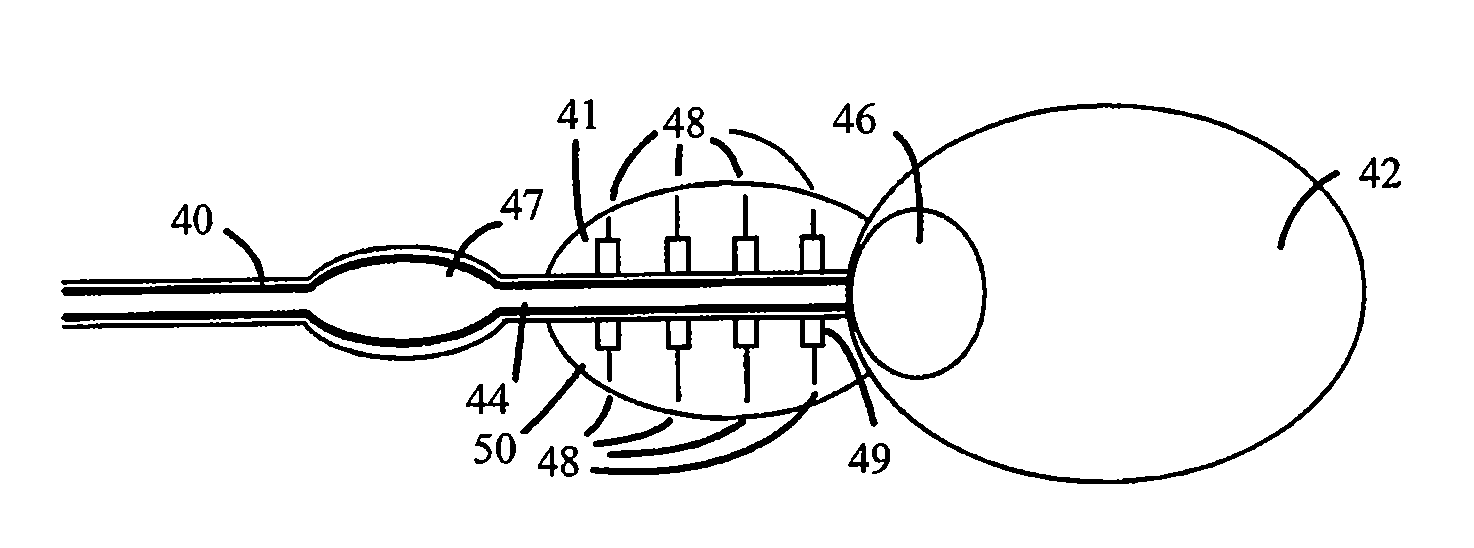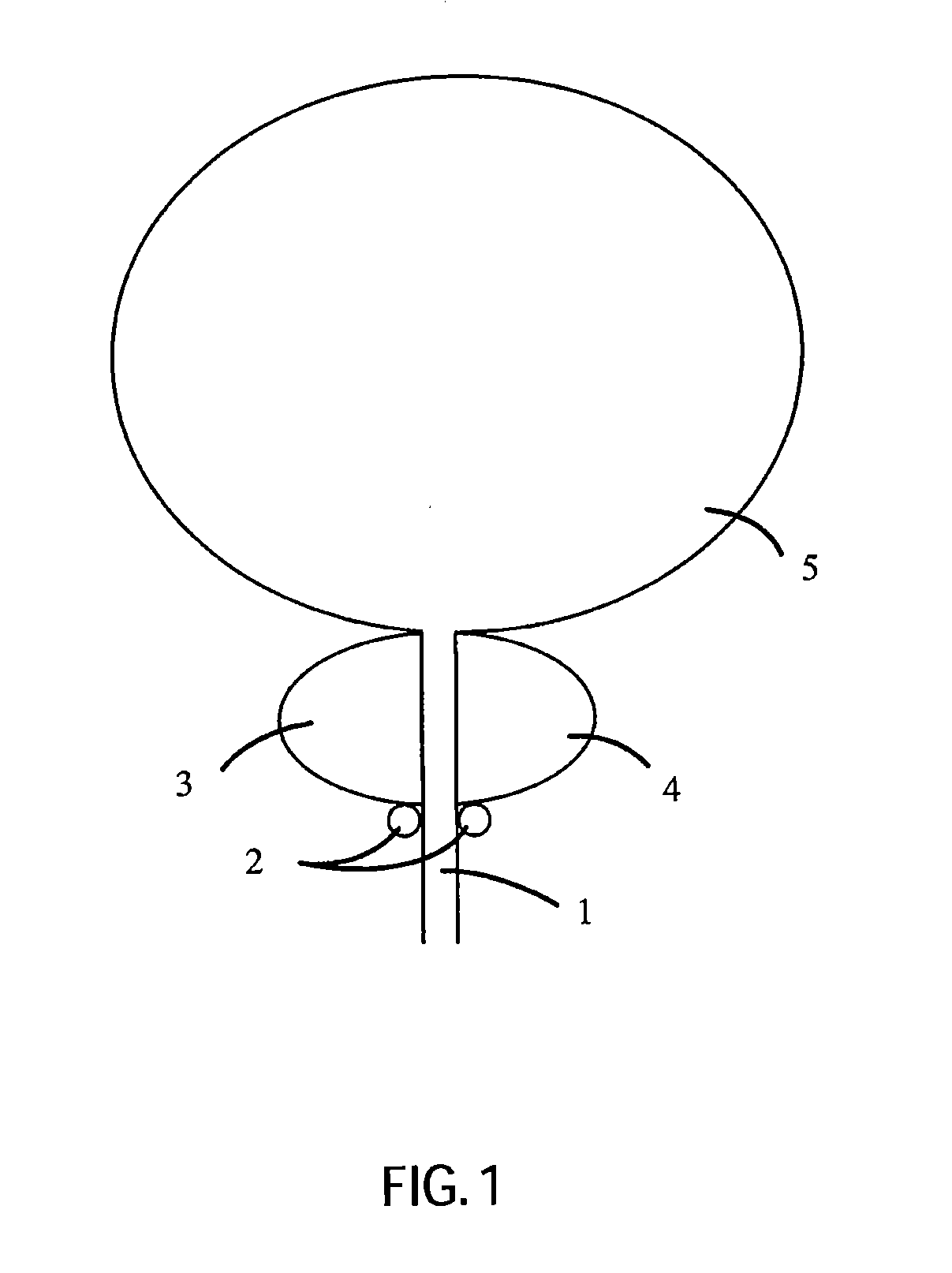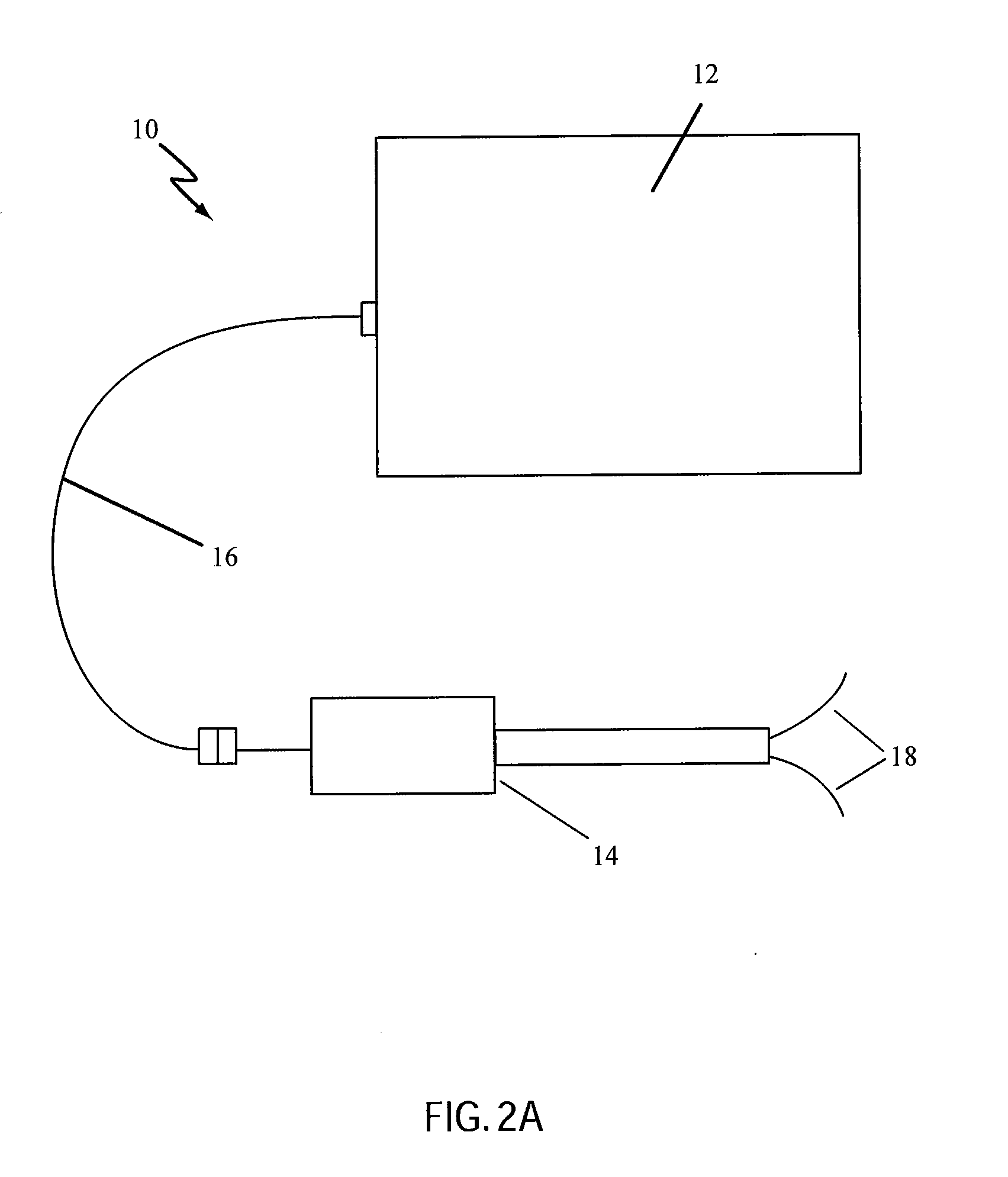Non-Thermal Ablation System for Treating Tissue
a tissue ablation and non-thermal technology, applied in the field of tissue ablation systems and methods, can solve the problems of inability to delay, difficulty in starting and stopping urination, incomplete bladder emptying,
- Summary
- Abstract
- Description
- Claims
- Application Information
AI Technical Summary
Benefits of technology
Problems solved by technology
Method used
Image
Examples
example 1
[0276]A study was performed to evaluate the chronic effects of DC ablation in canine prostates. Eight chronic canine subjects were treated to evaluate the healing cascade, dose response, prostate shrinkage, and the duration of time before necrotic tissues were reabsorbed into the body.
[0277]Treatment was performed on the subjects by performing a laparotomy and inserting electrodes through the prostate capsule. Treatment was performed at 40 mA and with a dose of between 4 and 70 C. The subjects' blood, urine, general health, and behavior patterns were monitored before sacrificing them at time intervals of 1, 3, 20, 40, and 60 days after treatment. The prostate and surrounding tissues were dissected and examined after sacrifice. Ultrasound and CT scans were used throughout the study to identify the necrotic lesions and identify any changes that took place to the lesion.
[0278]Ultrasound, CT imaging, and visual verification during histology showed that voids or cavities were created in ...
example 2
[0289]A study was performed to determine comparative size of the treatment region of a volume of tissue treated with a cathode and a volume of tissue treated with an anode. Beef round samples and in-vitro canine prostates were treated.
[0290]The following protocol were used to examine the amount of treated volume in beef round samples and in prostate at both the anode and the cathode:[0291]1a. Treat beef samples with the following currents: 20, 40, and 60 mA.[0292]1b. Treat in-vitro prostates with 40 mA current.[0293]2a. Treat beef samples with the following doses: 36, 72, 108, and 144 C.[0294]2b. Treat in-vitro prostates with 4 and 13 C of dose.[0295]3. Soak samples in formalin solution for a minimum of approximately 48 hours.[0296]4. Slice samples with meat cutter into approximately 3 mm slices.[0297]5. Measure thickness of each sample at anode and cathode treatment.[0298]6. Photograph each slice.[0299]7. Measure area of treatment in each sample using Microsoft Visio™ software.[030...
example 3
[0304]A study was performed to determine the effects of delivering a dose at different currents on the amount of treated volume. Beef round samples were treated. Protocol used for Example 3 followed the protocol of Example 2 for beef round samples.
[0305]The results of the study indicated that in the range of current between 20 and 60 mA, there is substantially no appreciable difference in the results of treatment.
[0306]Results are shown in Tables 9 and 10, below.
TABLE 9Cathode ResultsCathodeCathode StdN (SamplesDose (C)Current (mA)Volume (cc)Dev (cc)Tested)4400.220.04336201.040.22236401.080.15436601.400.33372202.330.13272402.360.42472602.650.733108202.500.373108403.270.6215108602.850.624144203.980.242144403.860.334144604.050.333
TABLE 10Anode resultsDoseAnode VolumeAnode Std DevN (Samples(C)Current (mA)(cc)(cc)Tested)00004400.150.00336201.230.01236401.320.21436601.150.18372202.080.00272402.530.17472602.230.113108203.030.953108403.310.9215108603.041.154144204.100.132144404.490.4241446...
PUM
| Property | Measurement | Unit |
|---|---|---|
| axial distance | aaaaa | aaaaa |
| axial distance | aaaaa | aaaaa |
| angle | aaaaa | aaaaa |
Abstract
Description
Claims
Application Information
 Login to View More
Login to View More - R&D
- Intellectual Property
- Life Sciences
- Materials
- Tech Scout
- Unparalleled Data Quality
- Higher Quality Content
- 60% Fewer Hallucinations
Browse by: Latest US Patents, China's latest patents, Technical Efficacy Thesaurus, Application Domain, Technology Topic, Popular Technical Reports.
© 2025 PatSnap. All rights reserved.Legal|Privacy policy|Modern Slavery Act Transparency Statement|Sitemap|About US| Contact US: help@patsnap.com



